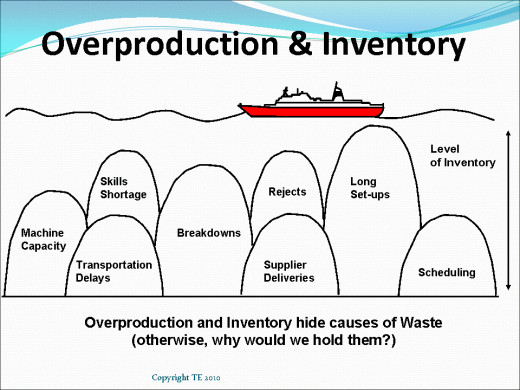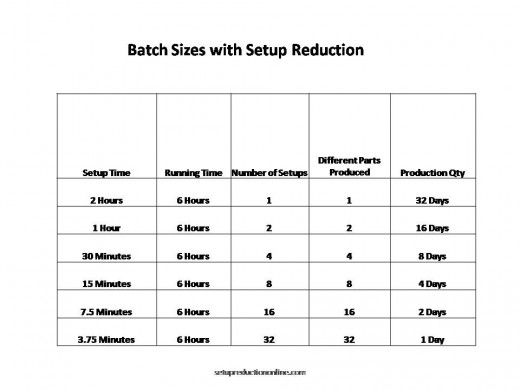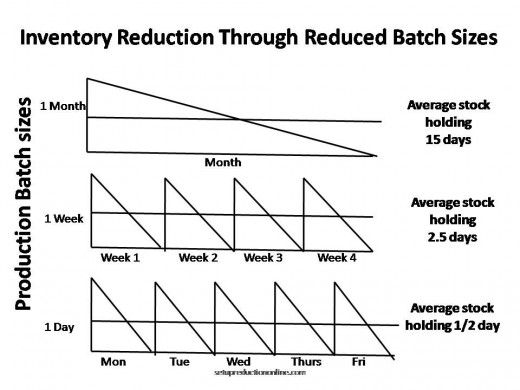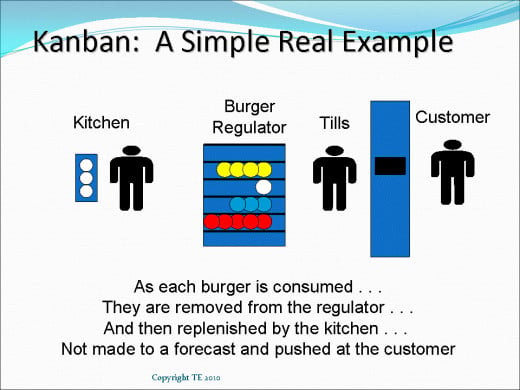Inventory Turns; Why should I reduce them?
How Much is Your Inventory Costing You?
Many businesses hold far too much inventory and really do not fully understand the real costs that are associated with all that stock and work in progress. Stock is probably the biggest problem that most businesses have yet more often than not they consider it an asset.
Stock costs you far more than you think! This article will go through how and why you really need to look at reducing your inventory turns to dramatically reduce your stocks in every part of your business.
Why do we Hold so Much Inventory?
A typical company holds inventory for just a few main reasons;
- Because we have to run economical batch sizes.
- To provide a buffer if we have problems
- Set up in manufacturing silos
- Because that’s the way we do it.
Why do we use "Economical Batch Sizes"?
Machines can really cost your business a huge amount of money, especially if you invest in the latest piece of all singing and dancing high tech gear that can produce 90% of all of the products that you make. The trouble is that these machines will often take time to changeover from one product to the next and while you are changing over you are not producing.
So if the changeover takes a few hours (which is not unusual) then you will want to ensure that you don’t have too many of these non-productive changeovers within the month. You will want to maximize the running time of the machine. This leads us to running large batches of products, often consisting of weeks or even months of product just so that we don’t have excessive downtime on our equipment.
Using Stock to Hide Problems
The most common reason for having large amounts of stock is to provide your business with a buffer against problems. If you have unreliable equipment you will want to make sure that there is a nice stock of parts there just in case something fails; if it does fail you can work on the stock while the machine is repaired. The same argument regarding holding buffer stocks can be used for;
- quality problems both in house and from suppliers
- Supplier delivery failure
- Machine and equipment breakdowns
- Absenteeism, skills shortages
- Scheduling errors and last minute changes
- Customer order changes
Having large quantities of stock allows you to continue work and providing your customers with product even if you have problems; however that stock will cause you potentially more problems than it will solve as you will see.
Excess Inventory is Used to Hide the Problems in your Business

We Structure our Businesses to Create Stock
If you walk into most businesses you will find that they are structured according to function. So all of the presses are in one location, hand assembly in another, and machine tools in yet another. Even our offices are organized in this same manner with each department having its own discreet area.
This organization drives us into functioning in isolation and producing batches to pass to the next area rather than allowing product and even information to be passed along as it is created.
We Have Always Done it This Way
We plan to make stock! Most businesses have always created excessive amounts of stock even if there was no need to do so. People function under the belief that it is more efficient to work on huge batches all of the time.
Even if you purchase an MRP or ERP system it will try to drive you into scheduling large batches of material through your organization. We plan to create excess stock.
So What Does Inventory Really Cost Us?
Many businesses will just look at the cost of inventory as the physical cost of the material itself and not think about what all of this stock actually causes us to need. Excessive amounts of stock require;
- Physical Space for storage
- Containers and Pallets
- People and Equipment to transport it and move it
In addition to the physical side of the stock it also causes;
- A lack of flexibility
- Long lead times
- Stock damage and obsolescence
- Record keeping and accounting
- Higher Insurance premiums
- Stock taking costs and time
These additional costs can easily add between 30% to %100 to the actual cost of your inventory depending on the nature of your business. That is without taking into account any impact on your business by not being flexible enough to react to customer's rapidly changing needs. How many times have you lost customers because you could not give them what they wanted quickly enough?
Many customers today are more interested in speed and flexibility rather than saving a cent here and there.
Improving Stock Turns
So how do we actually reduce the amount of stock that we hold so that we can reduce some of the problems that are caused; and to realize some of the cash that we have tied up?
Reduce Changeovers to Reduce Batch Sizes
Running economical batch sizes due to the length of time that our changeovers take is a huge issue for most businesses. Yet we always seem to be investing in these all singing all dancing infinitely adjustable machines that take forever to set up. But if we are going to reduce our setups then we need to follow that reduction with a change in batch sizes not just have quicker setups between huge batches. The following graphics demonstrate the savings that can be made through reducing the time it takes to changeover our processes using a technique known as SMED or Single Minute Exchange of Die;
Reduce Setups to Reduce Batch Sizes

SMED Reduces Inventory Holding

Demonstration of SMED
Implement JIT production
JIT (Just In Time) production is all about producing what the customer wants, where they want it and when they want it using the least possible resources. The ideal being that you only produce what the customer wants when they want it.
The biggest block to implementing JIT is usually issues with batch sizes which we have already mentioned and provided a solution for through SMED. As you reduce the batch sizes you are then able to better layout your facility to provide flow from one process to the next and thus enable Just In Time production. You then can use Kanban systems to pull the production through your facility ensuring that you only produce what the customer is calling for.
Improve Flow through Implementing JIT

Use Kanban to Control Production

Kanban in use
MRP / ERP vs Kanban
Having worked as a consultant in the UK and overseas I have been into many companies that have been struggling to meet the lead times that have been demanded by their customers. In almost all cases the first thing that has been done has been to disable the scheduling of the different processes through the companies' through their MRP or ERP systems.
Most of these systems attempt to micromanage the flow of production through the company by scheduling each and every production stage. Something that is far better left to simple systems such as Kanban. Kanban systems are far easier to set up than many people expect and for many companies the Constant Work in Progress (CONWIP) version of Kanban is the easiest to implement and use. I have personally implemented systems within a day or two that have reduced lead times from weeks down to just a day or two or even less.
Stock Reduction Case Study
Part of my consultancy life was spent working for the UK government through the DTI, many of the companies that contact us for help however were looking for handouts rather than help in actually improving their business.
One such company manufactured games and had been doing so for over 100 years from the same site in the town in which they were located. They were looking to find 15 thousand pounds for a new machine and the bank had turned them down for a loan despite it being a small amount compared to their turnover. The reasons for them being turned down however soon became clear when I looked at the company.
The company worked as two separate entities, the first manufacturing all of the games in huge batches that would last a full year. The second half was a warehousing and shipping area that employed more people than the production area.
It actually took longer to find and pack product for shipment within the warehouse than it did to produce it from scratch in production.
This company had more than a full years value of sales tied up in finished goods within its warehouse and employed more than half of its staff purely to manage, move, pick and ship this stock. Just by removing this stock this company could have freed up millions of pounds and saved itself over half of its overheads and labor costs.
In addition to this the company would dispose of up to 10% of its stock every year as it was obsolete.
I showed the owner (In his 70s, it was a family business) how he could produce and pack to order faster than he could find the product in his stores. Despite his management saying that it would work he refused point blank to consider working without the stock as "his business cannot work without stock and they have more than 100 years of experience to prove it."
I bought in several more consultants to try to convince the owner as the company was rapidly failing but they would not consider the changes that we suggested even when the staff themselves were calling for it to save their jobs. The company shut just 9 months later due to bankruptcy; something that could have been easily avoided just by producing to order rather than tying up everything in masses of stock.



